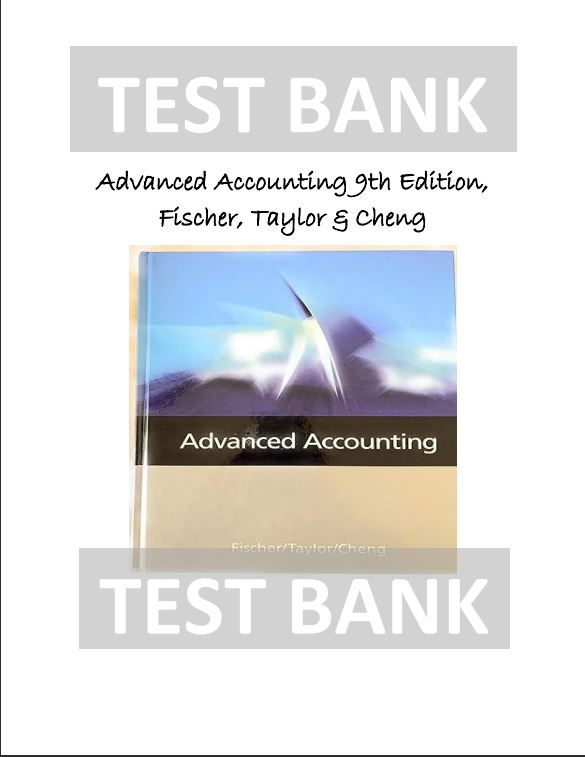Advanced Accounting 9th Edition, Fischer, Taylor & Cheng TEST BANK
Advanced Accounting 9th Edition, Fischer, Taylor & Cheng TEST BANK
Couldn't load pickup availability
Chapter 1 — Business Combinations: America's Most Popular
Business Activity, Bringing an End to the Controversy
MULTIPLE CHOICE
1. An economic advantage of a business combination includes
a. Utilizing duplicative assets.
b. Creating separate management teams.
c. Coordinated marketing campaigns.
d. Horizontally combining levels within the marketing chain.
ANS: C DIF: E OBJ: 1
2. A tax advantage of business combination can occur when the existing
owner of a company sells out and receives:
a. cash to defer the taxable gain as a "tax-free reorganization."
b. stock to defer the taxable gain as a "tax-free reorganization."
c. cash to create a taxable gain.
d. stock to create a taxable gain.
ANS: B DIF: E OBJ: 1
3. A controlling interest in a company implies that the parent company
a. owns all of the subsidiary's stock.
b. has influence over a majority of the subsidiary's assets.
c. has paid cash for a majority of the subsidiary's stock.
d. has transferred common stock for a majority of the subsidiary's
outstanding bonds and debentures.
ANS: B DIF: M OBJ: 2
4. Which of the following is a potential abuse that may arise when a
business combination is accounted for as a pooling of interests?
a. Assets of the buyer may be overvalued when the price paid by the
investor is allocated among specific assets.
b. Earnings of the pooled entity may be increased because of the
combination only and not as a result of efficient operations.
c. Liabilities may be undervalued when the price paid by the investor
is allocated to specific liabilities.
d. An undue amount of cost may be assigned to goodwill, thus
potentially allowing an understatement of pooled earnings.
ANS: B DIF: M OBJ: 3, Appendix A
http://downloadslide.blogspot.com
To download more slides, ebook, solutions and test bank, visit http://downloadslide.blogspot.com
Chapter 1
1-2
5. Company B acquired the assets (net of liabilities) of Company S in
exchange for cash. The acquisition price exceeds the fair value of the
net assets acquired. How should Company B determine the amounts to be
reported for the plant and equipment, and for long-term debt of the
acquired Company S?
Plant and Equipment Long-Term Debt
a. Fair value S's carrying amount
b. Fair value Fair value
c. S's carrying amount Fair value
d. S's carrying amount S's carrying amount
ANS: B DIF: E OBJ: 4
Share

